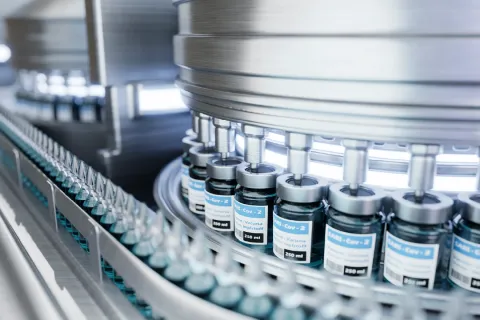
The pharmaceutical industry operates in a complex landscape where compliance with stringent regulations is paramount. One area where this is particularly crucial is in the creation and management of Regulatory artwork. Regulatory artwork encompasses everything from packaging and labeling to product inserts and documentation. Ensuring that all aspects of artwork comply with local and international regulations is essential to maintaining product quality and safety.
To navigate this intricate Regulatory environment, pharmaceutical companies must hire talent with the right expertise and skill set in Regulatory artwork management. In this article, we'll explore some strategies for finding the right fit when hiring Regulatory artwork management talent in the pharmaceutical industry.
Streamline Your Artwork Management Team
Request a consultation
Understanding the Role of Regulatory Artwork Management
Before delving into strategies, it's essential to understand the role of Regulatory artwork management in the pharmaceutical industry. Regulatory artwork managers play a critical role in the following:
1. Compliance: Ensuring that all artwork materials adhere to relevant regulations and guidelines.
2. Accuracy: Checking and verifying all artwork components for accuracy, including text, graphics, and legal requirements.
3. Consistency: Maintaining brand consistency across all artwork materials while complying with Regulatory changes.
4. Project Management: Coordinating the workflow of artwork projects, often involving multiple stakeholders, departments, and agencies.
5. Quality Assurance: Conducting quality control checks to prevent errors that could lead to Regulatory non-compliance or recalls.
Strategies for hiring talent to fill these crucial roles.
1. Define Clear Job Requirements
Start by creating a comprehensive job description that outlines the specific skills, experience, and qualifications needed for the role. This may include familiarity with Regulatory authorities like the FDA, EMA, or other relevant bodies in the pharma industry. Clearly define the responsibilities and expectations for the Regulatory artwork management position, so potential candidates understand the role's importance.
2. Look for Regulatory Expertise
Regulatory artwork management requires a deep understanding of pharmaceutical regulations and guidelines. Look for candidates who have experience working with Regulatory submissions, labeling requirements, and quality assurance processes. Candidates with prior experience in the pharma industry are often better equipped to handle the unique challenges of Regulatory artwork management.
3. Assess Attention to Detail
Due to the critical nature of Regulatory artwork, candidates must possess exceptional attention to detail. Consider including a skills test or practical exercise during the interview to evaluate a candidate's ability to identify errors or inconsistencies in artwork materials.
4. Project Management Skills
Regulatory artwork management often involves juggling multiple projects with tight deadlines. Look for candidates who demonstrate strong project management skills, including prioritizing tasks, managing timelines, and communicating effectively with cross-functional teams.
5. Technological Proficiency
The pharma industry has seen significant advancements in digital artwork management systems. Candidates with experience using artwork management software, document control systems, and design tools like Adobe Creative Suite may be better equipped to streamline the artwork creation and approval process.
6. Communication and Collaboration
Given the collaborative nature of the role, effective communication and teamwork are essential. Assess candidates' ability to collaborate with various departments, such as Regulatory affairs, marketing, and quality control. Strong interpersonal skills can help prevent misunderstandings and streamline the artwork approval process.
7. Stay Updated with Industry Trends
The pharmaceutical industry is continuously evolving, with Regulatory requirements subject to change. Look for candidates who demonstrate a commitment to staying updated with industry trends and evolving regulations. This can be a sign of their dedication to maintaining compliance.
8. Consider Cultural Fit
Lastly, consider the cultural fit of potential candidates within your organization. Pharma companies often have unique cultures and values that may align better with certain candidates. A good cultural fit can lead to better teamwork and job satisfaction.
In conclusion, hiring the right Regulatory artwork management talent in the pharmaceutical industry is essential for maintaining Regulatory compliance and ensuring product quality. By defining clear job requirements, seeking candidates with Regulatory expertise, assessing attention to detail, and evaluating project management skills, among other strategies, pharmaceutical companies can find the perfect fit for this critical role. Remember that Regulatory artwork management invests in compliance and brand integrity, so take the time to make the right hire. Do not hesitate to partner with a service provider who can help you find the right fit for your requirements. Freyr can be the Regulatory partner of choice in helping you run your artwork operations smoothly.









